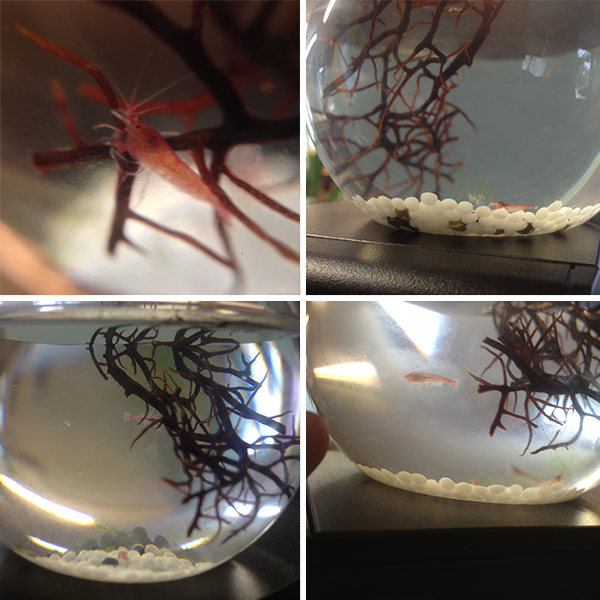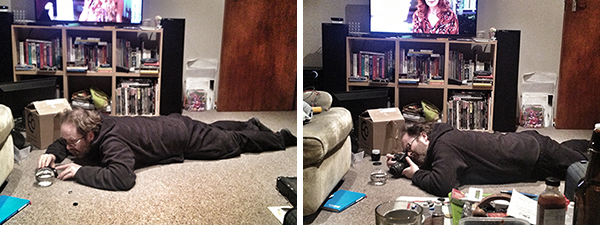Our family just keeps growing and growing. In addition to me and Partner, there’s Beefcake, Monster and (very recently) Hank, the motorbikes.
And of course Derek, the car. Leviathan, my bicycle, is on long term loan, but we haven’t forgotten it, heh.
And now? I’d like to introduce you to Tim, Hippolyta, Mary-Sue and Pip (short for Pipsqueak, because it’s much littler than the others).

They’re the shrimpies which live in the Ecosphere that Partner had shipped over from the States for my birthday. We’re extremely impressed with whomever did the shipping (we intend to find out) as the little glass habitat got to us completely intact.
So, what’s an Ecosphere? Well, they’re entirely closed systems contained in glass shapes. Mine contains the 4 shrimpies*, some algae and bacteria, filtered sea water, lightweight ‘gravel’ and shells, and a sea fan. Like the gravel and shells, the sea fan isn’t alive - these elements are all there to serve as attachment media for the algae. Also, the shrimpies really like hanging out in/on the sea fan :)
How does it survive? The only external thing it needs is light. As with any closed system, the waste from every component must be consumed - in this case the algae use light, as well as carbon dioxide and waste (broken down by bacteria) from the shrimpies, to grow. In turn, the shrimpies eat the algae (and their own exoskeletons, too), and breathe the oxygen produced by the algae.
These are more than just idle curiosities, though - Ecospheres were invented by NASA’s Jet Propulsion Lab (the JPL) as a means of researching self-contained communities: a subject of great interest to space exploration. According to the Ecosphere website:
NASA had two programs that benefited from the discovery: Mission to Planet Earth, aimed at studying Earth’s environment, and the Space Program. If NASA could figure out how to sustain life in a closed environment, perhaps they could build space stations that would help in exploring our solar system… and perhaps one day, help us live somewhere other than Earth.
While my shrimpies are unlikely to reproduce, apparently the bacteria and algae will continue to over time, and I should even see a change from green to blue algae! With a bit of luck, my Ecosphere will last a good 2-3 years (and perhaps longer).
Excite :)
—-
Bonus fact!
We realised last night, when we brought the Ecosphere home, that, well, the shrimpies respond to the sound of Partner playing the Kazoo. General kazooing as well as ‘The Final Countdown’.
At least two of the shrimpies went from still to swimming around the Ecosphere at quite a clip, and for minutes after Partner stopped playing.
So, this weekend, I think we’re going to need to do some sound-based experiments :) Are these heavy metal or lounge jazz shrimpies? Or does it have to be some sort of vaudeville/bluegrass thing?
—-
* I’m seeing whether people at work can identify them, for funsies.
UPDATE: I took it to the resident expert at work. It’s a bit difficult for him to identify them without a microscope (they’re only a mm or two long), but he reckons they’re definitely not mysids. We’re going to try take some hardcore macro shots of them this weekend, though, and said expert is willing to have another crack at it using those.
